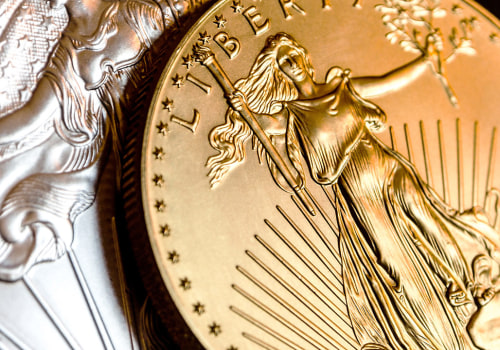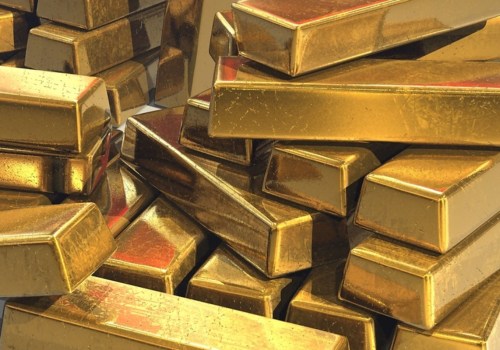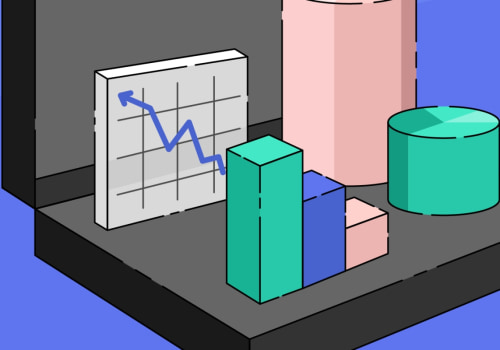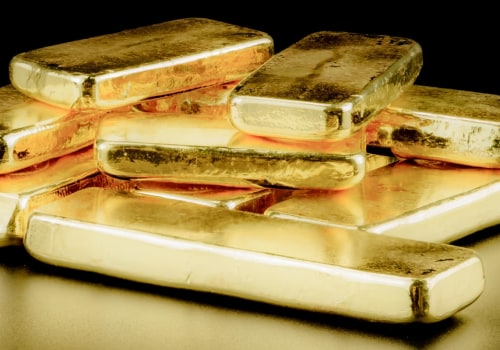Gold, a long-time favorite of precious metal investors, has been used as a store of value for thousands of years. Gold is known as an investment that tends to maintain its value well during economic slowdowns and that can overcome major recessions quite well. Gold is one of the most traded investments to date, and probably what most people think of when investing in precious metals. Gold is rare and valuable, but it's also important to consider the potential downsides of investing in it.
First of all, investing in gold has historically been the standard when it comes to preserving the value of your money against inflation. Inflation, or the gradual increase in prices in the economy over time, has reached drastic levels, meaning that Americans' purchasing power is declining. One way investors have protected themselves against that is by diversifying their portfolios with investments in gold. There's a good reason why central banks around the world hold gold ingots as a reserve asset.
On a case-by-case basis, a possible setback to investing in gold is to wait a long period of time for a return. However, many gold investors may not have the goal of obtaining high investment returns with gold. Rather, they decide to invest in gold to preserve the value of their money over time. Silver is a popular investment in precious metals that is often considered a protection against uncertainty because of its ability to maintain its value over time during various economic conditions.
Like gold, investors can hold on to silver because of its role as a “safe haven asset”. Silver has a long history of being a store of value. Investors see it as a hedge to protect against inflation and economic uncertainty. Since silver is cheaper than gold, it is believed to be a more affordable and accessible investment in precious metals.
Silver can be adapted to a wide range of investor objectives. Over the centuries, silver has often served as a form of money. The main reason why silver has retained its value over time is because it is used in a variety of industrial applications, making it more immune to recession compared to other precious metals. In addition to its accessibility, silver can be easily bought and sold on major stock exchanges, online distributors, or brokerage firms.
Silver prices tend to be more volatile than gold prices in the short term. Therefore, investors sensitive to volatility may not be able to manage this risk and would be more comfortable with a more stable investment. The volatility of silver is more evident because there are several factors that can influence its price. These include changes in industrial demand or global events that can make it difficult to assess the direction of the silver market.
Palladium is a rare precious metal that has multiple applications. However, its demand derives particularly from the automotive industry. It can be extracted in different countries such as the United States. UU.
Palladium is very similar in appearance to silver and platinum. Palladium is a suitable portfolio diversifier because it is an asset with lower volatility, a characteristic of most precious metals. However, palladium tends to have greater price volatility relative to gold. One challenging aspect of palladium is its lower liquidity.
As it is a rare metal, it is not traded as much as other precious metals such as gold and silver. This can also make the price of palladium volatile. Platinum is a precious metal that has many uses, such as the manufacture of jewelry, catalytic converters and electronic vehicles. Like other precious metals, platinum as an investment can be a great portfolio diversifier.
Although its value may change depending on several economic factors, it is considered an asset that is not correlated with stocks and bonds. This means that their price is influenced by catalysts different from those of traditional assets. Platinum can serve as an adequate hedge against inflation or maintain its value better than other assets in times of high inflation. Finally, platinum maintains its high value driven by industrial demand.
There are many different industrial applications of platinum that can offer stability in the price of platinum. Some of the drawbacks of investing in platinum include its volatility. The market price of platinum can fluctuate due to a number of factors, such as supply and demand, macroeconomic changes and global events. In addition, investors who own or are interested in owning physical platinum should consider storage and insurance costs, which could ultimately affect the return on investment.
Another major disadvantage to consider is the lack of liquidity of platinum. Platinum, especially in physical form, is a less liquid asset, making it more difficult to sell if you need to convert it to cash. Copper is a popular investment, as it can be used in a variety of products and industries. These include construction, transportation and electronics.
Copper is a highly sought after metal due to its diverse applications in the global economy, which can help increase its value. Like other precious metals, copper can act as a portfolio diversifier, since it is an asset that is not correlated with traditional stocks and bonds, reducing investment risk. In addition, copper can help protect against inflation, since its value increases as the cost of living and the cost of production increase. Large quantities of copper wire and copper pipes are used in various industries.
Since copper can be mined around the world, copper presents a geopolitical risk. If a country known for mining copper decides to change manufacturing or production procedures, this could disrupt the final markets for copper and affect the price of the precious metal. In addition, copper has a finite supply. Therefore, if demand increases, that could lead to a shortage of copper and increase its price.
This silver metal is mainly used in the production of catalytic converters for cars. It is considered a very rare and expensive metal, whose price changes depending on supply and demand. Rhodium is a rare precious metal that is in limited supply. Therefore, if demand increases over time, this could increase the price of the precious metal, making rhodium an adequate investment-generating asset.
Rhodium has multiple applications that can keep its demand high, such as its use in cars, which is an important sector of the economy. Because it has a high melting point, rhodium can play a vital role in many industrial applications. The market for investing in rhodium is smaller than most of the other precious metals on the list. Rhodium isn't the most popular precious metal investment.
It is not yet considered a traditional precious metal, making it difficult for interested investors to find a variety of investment options or reliable information about them. There are a variety of precious metal investment options. They can help protect a long-term investment portfolio from inflation and recessions, two factors that have weakened investors last year. While gold and silver are the most popular, smart investors should continue to learn what other options are available in the market and what potential benefits they could add to their strategies.
While this not-so-good news poses a challenge to investment returns, it is an ideal configuration for precious metals, which have historically maintained their performance during recessions. While gold only rose by about 2% over the past year, it still outperforms the overall market. This shows that precious metals are a great way to diversify your investments to protect against the volatility of other assets in your portfolio, such as stocks and bonds. Why you can't buy gold and silver at spot prices.
Precious metals are rare metals that have a high economic value. They are valuable because they are scarce, are useful for industrial processes or have investment properties that make them a good store of value. Notable precious metals include gold, silver, platinum, and palladium. Gold is the best-known and most invertible precious metal.
It is unique because of its durability (does not corrode), its ability to form and its ability to conduct heat and electricity. While it has some industrial uses in dentistry and electronics, it is mainly used to make jewelry or as a form of currency. It has long been a store of value. For this reason, investors seek it in times of economic or political turbulence and as a hedge against rising inflation.
There are many ways to invest in gold. You can buy physical gold coins, ingots, or jewelry. Investors can also buy gold stocks (shares of mining, streaming or royalty companies), gold-focused exchange-traded funds (ETFs), or gold-focused mutual funds. Each gold investment option has its advantages and disadvantages.
The drawbacks include the expense of storing and insuring physical gold and the possible underperformance of stocks and gold ETFs compared to the price of gold. The benefits include the ability of physical gold to track the price of the precious metal and the potential for gold stocks and gold ETFs to perform better. The dual function of silver as an industrial metal and a store of value tends to make it more volatile than the price of gold. Volatility can have a big impact on silver stock prices.
In some cases, silver prices may exceed gold during periods of high industrial and investor demand. Platinum, like silver, is primarily used as an industrial metal. It is essential for the automotive industry, which uses it to manufacture catalytic converters that help reduce vehicle exhaust emissions. In addition, the oil and refining sectors and the IT industry use platinum.
Some jewelry is also made of platinum. Given its rarity, metal has a certain investment value, although not to the same extent as silver or gold. An emerging risk of investing in precious metals is the rise of cryptocurrencies. Crypto assets have investment properties similar to those of gold and silver.
Both are a store of value and a possible hedge against inflation and geopolitical and economic risks. As more investors turn to cryptocurrencies, investor demand for gold and silver could decrease, causing their prices to fall. Investing in precious metals isn't for everyone. You must determine why you want to invest in precious metals (a hedge against inflation, to store value, diversify your portfolio or benefit from higher prices) and choose the metal and investment vehicle that best suit your investment thesis.
Each option has its advantages, disadvantages and risks. One of the biggest risks is that you might be right (p. ex. Investors should carefully consider whether they want to invest in precious metals and, if they do, fully understand the risks associated with the investment they have chosen.
Palladium is a precious metal highly valued by investors. It is highly resistant to corrosion and has an attractive silver-white appearance. Palladium is a relatively soft metal and is particularly rare, significantly rarer and more expensive than silver or gold. Gold has demonstrated great strength and skill in maintaining the metal most sought after by investors.
However, investing in gold is not for beginners. Gold is still the best investment option, but its price per ounce is limited. Gold is a valuable piece of metal that will soon be used as a currency in the cryptographic sphere. Central banks also store gold because of its perceived use in money.
Gold offers a greater scale of financial security compared to silver and platinum. From the point of view of investment theory, precious metals also provide a low or negative correlation with other asset classes, such as stocks and bonds. Compared to other precious metals, osmium has relatively few industrial uses, but it is useful in multiple applications. This means that even a small percentage of precious metals in a portfolio will reduce both volatility and risk.
If you're not interested in having ingots and coins made of high-value metals in your home or safe deposit box, you have the option of investing in precious metals without physically owning a single coin. It is also an opportunity for investors who want to expand their portfolio to buy silver, as demand is lower and prices are quite low compared to other precious metals. One way to invest in precious metals is to buy hard assets, such as ingots and coins, or even to buy gold ingots through Vaulted. So, if you're not interested in buying silver and gold coins or you want to diversify your secure assets but don't want to stray too far from precious metals, you're in luck; you have several options.
The precious metal is also used in crucibles and equipment used at high temperatures, as well as as a source of high-strength electrical contacts. In addition, there is a greater correlation between the stock market and these types of investments, which could also cause the price of precious metals shares to underperform the price of the underlying metals during a general sale in the market. This is another precious metal that is commonly found in small concentrations in nickel deposits; it is also found in platinum ore. .




Leave Message